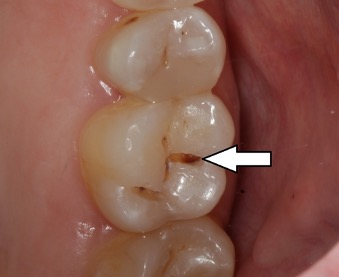February is Children’s Dental Health Month according to the American Dental Association (ADA). This month is therefore dedicated to the prevention and treatment of dental diseases in children and young people. This year’s campaign slogan is “Brush, Floss, Smile!
In this issue we discuss dental sealants- a cost-effective treatment that prevents dental decay in children and young adults.
Dental sealants are a painless and practical treatment choice. Dental sealants are thin, plastic coatings painted on the chewing surfaces of teeth. They prevent dental caries (cavities). The sealant quickly bonds into the pits and grooves of the teeth forming a protective cover over the enamel of the teeth. Sealants are less expensive than fillings and are a good preventive treatment in oral health care.
Back teeth (premolars and molars) have natural grooves and crevices on their biting surfaces. At times, even front teeth have pits behind them in an area known as the cingulum. These crevices make teeth susceptible to sugar and plaque accumulation. The result is cavities that could be prevented.
Although, as a good preventative measure, children are taught to thoroughly brush and floss their teeth to remove food particles and plaque from smooth surfaces of teeth; they cannot effectively get into these grooves and pits. Sealants protect these vulnerable areas from tooth decay by blocking and sealing the area thereby preventing the sticky plaque and foods from initiating the cavity process.
Sealants are usually recommended for children and teenagers because of the likelihood of developing decay in the grooves of newly erupted premolars and molars. In this way, the sealants can protect the teeth through the cavity-prone years of ages 6 to 14. Adults can also benefit from sealants; however, the earlier you get them the better.
The most cavity- pruned back teeth are the first molars. They appear around age 6. The second molars appear around age 12. Sealing these teeth as soon as they erupt, can keep them cavity-free from the start, which helps save money in the long run.
At times, dental sealants are also applied on primary (baby) teeth especially when a child’s baby teeth have deep fissures and grooves. Although the baby teeth are lost naturally it is important to preserve them during the teeth-changing years because they play an important role in holding the space for permanent teeth. When this does not happen naturally because of early baby-teeth loss, the permanent teeth will likely erupt crooked or they remain trapped below the gum.
Sealants have been shown to reduce the risk of decay by nearly 80% in molars. This is especially important when it comes to your child’s dental health. In October 2016, the Center for Disease Control released a report on the importance of sealants for school-aged children. They found that school-age children without sealants have almost three times more cavities than children with sealants.
Applying dental sealants is a quick and painless process. Sealants will usually last for several years before they need to be replaced. During your regular dental visit, your dentist will check the condition of the sealant and can reapply them as needed. Dental sealants are important considerations in your oral health program. Since they are painless, can be easily applied and cost effective they can be of great value in preventing the most common disease among children- dental cavities. For further information please visit our website at www.csddentistry.com
Dr. Kendal V. O. Major is Founder and CEO of Center for Specialized Dentistry which is a comprehensive family dental practice operating in Nassau and Freeport. He is the first Bahamian Specialist in gum diseases and dental implants since 1989. He also is a certified Fast braces provider. His practice is located at 89 Collins Avenue, Nassau at (242)325-5165 or [email protected]

See deep fissures and groves on biting surfaces of molars

Molar grooves treated with a dental sealant





